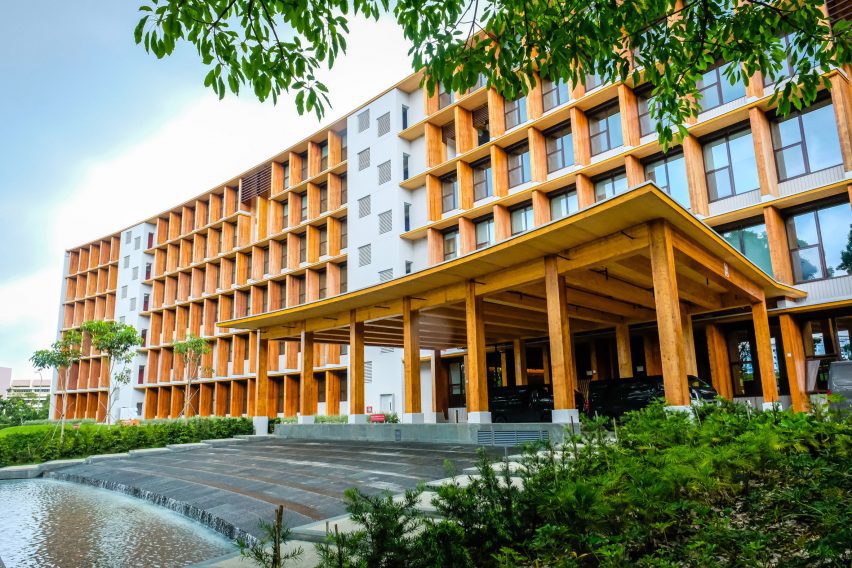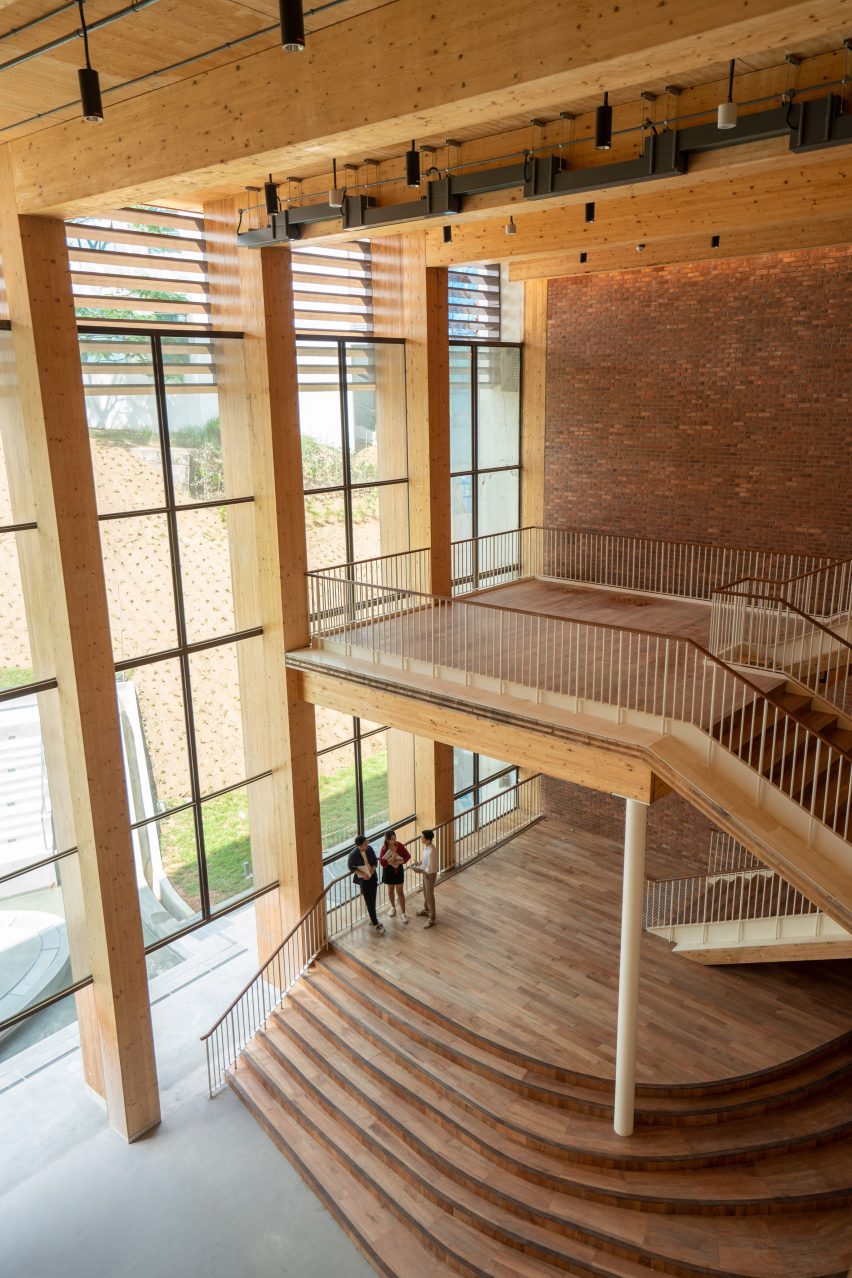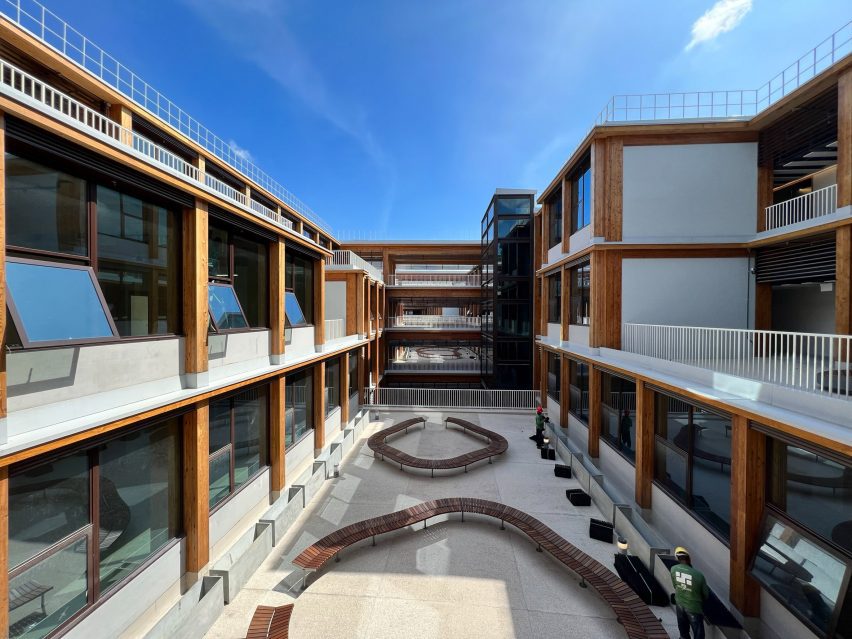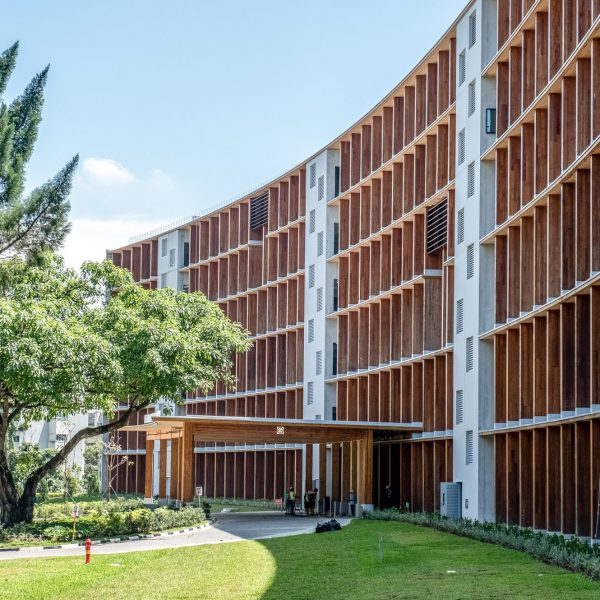Mould is growing on Gaia, a mass-timber business school in Singapore that was completed last year for the Nanyang Technological University by Japanese architect Toyo Ito and Singapore-based studio RSP Architects.
Nanyang Technological University (NTU) claimed the 43,500-square-metre school was “the largest wooden building in Asia” in terms of the volume of timber used when it opened in 2023.
The university announced this week that mould was reported to have been growing on the exterior and interior structure.

After gaining insight from two independent experts, NTU claimed that most of the mould was found on air-conditioning supply grilles and on furniture surfaces.
The two experts concluded that the mould growth occurred due to condensation and exposure to rain, rather than the timber.
“Condensation occurs when the external humid air comes into contact with cooler indoor surfaces, such as when windows and doors of the offices are opened for prolonged periods,” said NTU.

One of the external experts, National University of Singapore built environment associate professor Tham Kwok Wai, said Gaia’s mass timber construction did not contribute to the mould growth, as it was properly sealed and met the certified regulatory standards.
The building has glued-laminated timber beams and columns, while cross-laminated timber was used for floor slabs and solar shading.
Prior to NTU’s announcement, media company Bloomberg had reported that the choice of wood used for the mass-engineered timber elements could be the reason for mould growth.
“In a place where relative humidity frequently reaches 80 per cent, spruce that’s not properly treated is vulnerable to mould and rot,” Andrew Wong of the International Wood Culture Society told Bloomberg.
Singapore-based media company Mothership visited Gaia on 19 August and found that mould was most apparent on the top three floors of the six-storey building, publishing photos of growth on the columns both inside and outside the building.

In NTU’s announcement, the university’s chief development and facilities management officer Siew Hoong Kit ensured that the health of those at the university was of the greatest importance.
Siew said that mould growth would be remediated through daily cleaning and maintenance.
Other mass-timber projects in Asia include a hybrid timber high-rise hotel in Sapporo, Japan, and a circular structure designed by architect Sou Fujimoto for Expo 2025 Osaka, which is under construction off the coast of Japan.
The images of Gaia after its completion are courtesy of NTU.

